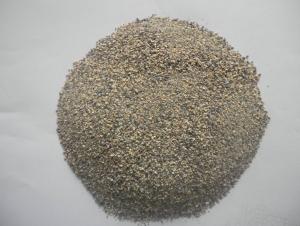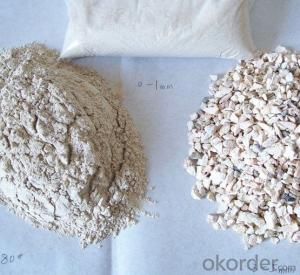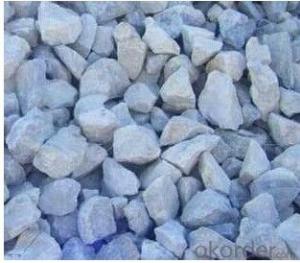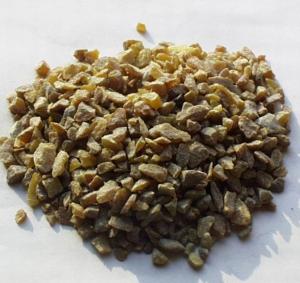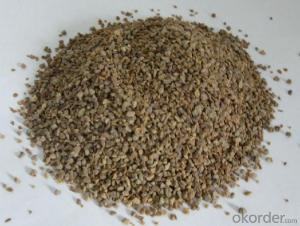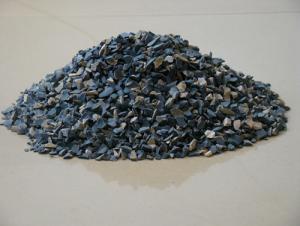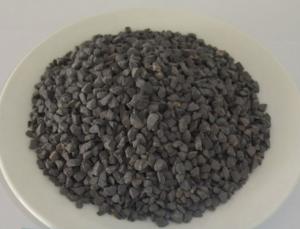Raw Materials for Refractory - Caustic Calcined Magnesite MgO
- Loading Port:
- China Main Port
- Payment Terms:
- TT OR LC
- Min Order Qty:
- -
- Supply Capability:
- -
OKorder Service Pledge
OKorder Financial Service
You Might Also Like
Specifications
Caustic Calcined Magnesite
a. mgo : 60-95%
b. size:120-400mesh
c. packing: 50kg 1000kg
Product application:
Widely used in metallurgy, building materials, chemical industry, national defense, scientific research, aerospace,, medical equipment components in areas such as household appliance
MgO% min | SiO2% max | CaO% max | Fe2O3% max | Al2O3% max | L.O.I. max | Size |
97 | 0.4 | 1.0 | 0.6 | 0.2 | 1.0 | 120-400mesh |
96 | 0.5 | 1.5 | 0.8 | 0.3 | 1.5 | 120-400mesh |
95 | 1.0 | 1.5 | 0.8 | 0.3 | 3.0 | 120-400mesh |
94 | 1.5 | 1.5 | 0.8 | 0.3 | 3.5 | 120-400mesh |
92 | 3.0 | 2.0 | 0.8 | 0.3 | 5.0 | 120-400mesh |
90 | 4.0 | 2.5 | 0.8 | 0.3 | 6.0 | 120-400mesh |
85 | 5.0 | 3.0 | 0.8 | 0.3 | 8.0 | 120-400mesh |
80 | 7.0 | 4.0 | 0.8 | 0.3 | 9.0 | 120-400mesh |
Caustic Calcined Magnesite is produced in the Rotary Kiln by sintering raw magnesite at a controlled temperature of 1750 degree centigrade and its chemically inactive. Dead Burnt Magnesite is consume almost exclusively in the production of Refractory Field.
Dead Burnt Magnesia Uses:
1. Refractory Industry for manufacture of Basic Refractory Bricks
2. Manufacture of Ramming Mass composition, Fettling material and Magnesite Mortar
3. It is used in SLAG beneficialness and in SLAG splashing in Arc Furnaces
4. It is also used as a coating material in Steel Industry.
- Q: How to divide the materials according to the National Fireproofing Material Standard?
- Each country has its own fire safety standards, I do not know which country's standard do you want to know, and each country of fireproof material to the division level is not the same. GB GB 8624, the German standard DIN 4102-1, the British standard BS 476, French standard NF P92 -501 and so on. GB 8624 is Chinese building materials and grade of combustion performance. The information coming form fire resources network (FireTC.
- Q: Why the refractories should be waterproof and wetproof
- The binding agent of many raw materials is water-soluble. It will be useless when meeting water.
- Q: How much is the duration of fire resistance of the porous brick shale?
- This is really a simple question. The temperature should be limited within 1050℃, or it will be scorched. I think 980℃would be acceptable.
- Q: Where is refractory used? Thank you!
- Currently, refractory is widely used as inorganic nonmetallic material of production equipment lining in metallurgy, ceramics and other industries. The current definition of refractory does not only depend on whether the refractoriness is above 1,580℃.
- Q: who knows the fire resistant level of fireproof gypsum board ?
- The most commonly used ceiling decoration materials rates B1, including gypsum board, fibrous plaster, cement particle board, mineral wool sound-absorbing panels, glass wool decorative acoustic?panel?absorber, perlite decorating acoustic board, nonflammable plywood, nonflamable medium density fiberboard, mineral wool decorative board, flame retardant wood, aluminum foil composites, flame retardant phenolic plywood, aluminum foil glass fiber reinforced plastic composite materials. The fire gypsum board fire rating can reach A. Of course, many of the suspended ceiling gypsum board of inferior quality rates below B1. plasterboard is non-flammable B1 level products. There are introductions in Fireproof Specification of National Standard Building Interior Decoration Design. plaster board mounted on steel stud can be used as A level decoration materials. in accordance with the national fire safety rules on fire durance of walls and ceilings and other components. we can not simply say whether a piece of gypsum board can meet the requirements.
- Q: What's the type of fire proofing thermal insulation materials?
- Hello! Fire proofing thermal insulation material can be classified as inorganic thermal insulation material and composite thermal insulation material. According to the form, it can be divided into fibrous veneer, mineral wool, rock wool, glass wool, aluminum silicate cotton, ceramic fiber, microporous diatomite, calcium silicate, expanded perlite, expanded vermiculite, aerated concrete, bubble foam glass, ash, glass, clay, foam concrete, and pasted paste powder polystyrene particles insulation pulp, etc. They are characterized by flame retardancy and fire proofing and thus can be used in buildings with high fire proofing class. Among them, calcium silicate, aluminum silicate and asbestos can also be used for the thermal insulation for heat supply pipelines.
- Q: Does anyone know the fire endurance of steel stud partition?
- Indeed ① Dragon Brand gypsum board fire-resistant partition: Its fireproofing extreme time is 4 hours, suitable for firewalls of a variety of public buildings, public exit passageway and other partitions, which meets the first level of fire protection standard ② fireproofing and pressure-resistant partition: Refers to the partition which can withstand momentary gas shocks of over 1200pa , mianly used for the room partition with inert gas fire-fighting needs, such as equipment rooms. The pressure-resistant degree of fireproofing and pressure-resistant partition of Beixin Building Materials can be up to 4800Pa, especially suitable for high-rise fireproofing.
- Q: On the problem of making refractory materials
- But if only a is chosen, does it mean that as long as it is insoluble in water, it can be made of refractory material? Obviously absurd!
- Q: Which refractory is suitable for the tunnel kiln?
- Shuttle kiln refractories requires the good thermal shock properties. Because the tunnel kiln is continuous firing furnace, the temperature in the kiln is long time stable and with little fluctuation. The shuttle kiln is intermittent kiln firing. The temperature in the firing kiln is adjusted by the firing curve. It is with a relatively short time and serious fluctuation. The seal and kiln car take use of the heavy corundum brick. If it is continuous kiln, the alumina hollow ball bricks are used in the burning zone. The seal of the burning zone takes use of the kiln car brick and the seal takes use of the heavy corundum brick.
- Q: who knows the technology of fireproofing material?
- First: Firstly, you should produce the recipe and prepare the raw materials, for example, if you prepare to produce 1 ton, you should compute the recipe sheet of 1 ton producing; check whether the raw materials are complete; second: make the color and filler thick liquid; add water in order and proper auxiliary in a low speed, then put color and filler (generally we should firstly add something with large oil absorption), wash the meachine after putting the powder. Then seperate them for about 20 miutes in a high speed, until the fineness is qualified; of course, if you need sander, i think you only need sino-soviet differential powder material and non-obvious particles. Third: Paint mixing period: after making the color and filler thick liquid, reduce the roll speed into about 600 roll per minute, add emulsion and proper auxiliary, finally adjust PH and viscosity. Liquid solvent paint, pigment paste: Resin,solvent and pigment ---〉pre mixing---〉stick---〉grinding--〉stick--〉packaging, highlight varnish: Resin, solvent ----〉mixing ----〉stick ----〉packaging, sub-gloss varnish: Resin, solvent----〉mixing----〉matting agent,stick----〉packaging, colored?paint: The primary colorant----〉Color matching by auxiliary color paste----〉stick----〉packaging, aluminum?paint: Aluminite powder soaking----〉resin----〉colour modulation, lustre adjusting----〉stick----〉packaging, powder coat: Resin,filler,pigment,auxiliary---〉mixing---〉extrusion---〉cooling---〉smashing---〉sieving---〉 packaging.
Send your message to us
Raw Materials for Refractory - Caustic Calcined Magnesite MgO
- Loading Port:
- China Main Port
- Payment Terms:
- TT OR LC
- Min Order Qty:
- -
- Supply Capability:
- -
OKorder Service Pledge
OKorder Financial Service
Similar products
Hot products
Hot Searches
Related keywords



